Stanley Cortez, A.S.C. was an American cinematographer. The younger brother of actor and director Ricardo Cortez, Stanley worked on over 70 films, including Orson Welles' The Magnificent Ambersons (1942), Charles Laughton's The Night of the Hunter (1955), Nunnally Johnson's The Three Faces of Eve (1957), and Samuel Fuller's Shock Corridor (1963) and The Naked Kiss (1964).
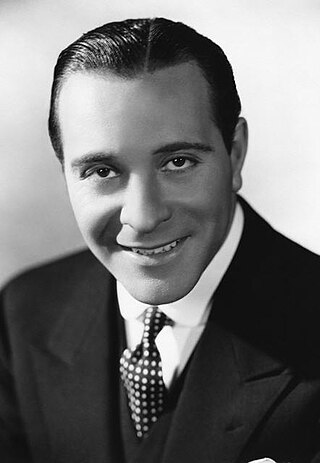
Ricardo Cortez was an American actor and film director. He was also credited as Jack Crane early in his acting career.

Charles K. Gerrard, also known as Charles Kavanagh, was an Irish-American motion-picture actor, and the elder brother of actor and film director Douglas Gerrard.
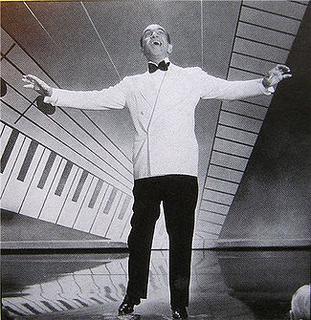
Wonder Bar is a 1934 American pre-Code film adaptation of a Broadway musical of the same name directed by Lloyd Bacon with musical numbers created by Busby Berkeley.
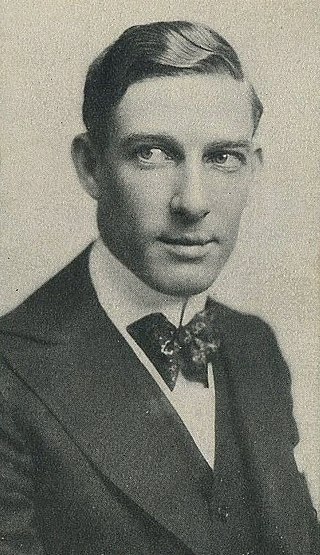
Lee Moran was an American actor, film director, and screenwriter.

Midnight Mary is a 1933 American pre-Code crime drama film directed by William A. Wellman and starring Loretta Young, Ricardo Cortez, and Franchot Tone.

The Locked Door is a 1929 American pre-Code drama film directed by George Fitzmaurice, and starring Rod LaRocque, Barbara Stanwyck, William "Stage" Boyd and Betty Bronson. It is based on the 1919 play The Sign on the Door by Channing Pollock. The play was first adapted for the screen in 1921 as The Sign on the Door, starring Norma Talmadge. It was Stanwyck's first starring role and first talking film.
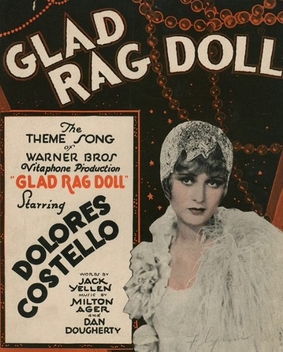
Glad Rag Doll is a 1929 American sound part-talkie pre-Code drama film directed by Michael Curtiz, and starring Dolores Costello, Ralph Graves, and Audrey Ferris. In addition to sequences with audible dialogue or talking sequences, the film features a synchronized musical score and sound effects, along with English intertitles. The soundtrack was recorded using the Vitaphone sound-on-disc system. This is one of many lost films of the 1920s, no prints or Vitaphone discs survive, but the trailer survives. The film's working title was Alimony Annie, but was changed match the title of the theme song. The theme song is entitled Glad Rag Doll both played and sung throughout the soundtrack.

Madonna of Avenue A is a 1929 pre-Code drama film directed by Michael Curtiz. It was produced and distributed by Warner Bros. It starred Dolores Costello in one of her first sound films. This is reportedly a lost film.
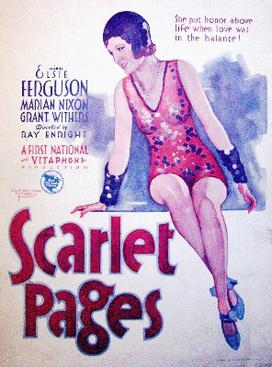
Scarlet Pages is a 1930 pre-Code American crime drama film with songs starring Elsie Ferguson and directed by Ray Enright. It was produced and distributed by First National Pictures, a subsidiary of Warner Bros. The film stars Elsie Ferguson, John Halliday, Grant Withers and Marian Nixon. Scarlet Pages is based on a 1929 Broadway play of the same name that Ferguson also starred in. It is similar in theme to the better remembered Five Star Final, also by Warners released a year later. The film simultaneously marked the first time Ferguson appeared in a sound film and the last film she ever made.

The Swan is a 1925 American silent comedy film directed by Dimitri Buchowetzki and starring Frances Howard, Adolphe Menjou and Ricardo Cortez. It was produced by Famous Players–Lasky and distributed by Paramount Pictures.

Excess Baggage is a lost 1928 American synchronized sound comedy film directed by James Cruze and distributed by MGM. While the film has no audible dialog, it was released with a synchronized musical score with sound effects using both the sound-on-disc and sound-on-film process. The film was based on the 1927 play of the same name by John McGowan. The film starred William Haines, Josephine Dunn and Kathleen Clifford.

Daring Youth is a 1924 American silent comedy-drama film directed by William Beaudine, starring Bebe Daniels, Norman Kerry, and Lee Moran. It is loosely based on William Shakespeare's The Taming of the Shrew.

Take It from Me is a 1926 American silent comedy film directed by William A. Seiter and starring Reginald Denny, Blanche Mehaffey, and Lee Moran.

After Business Hours is a 1925 American silent drama film directed by Malcolm St. Clair and starring Elaine Hammerstein, Lou Tellegen, and Phyllis Haver.
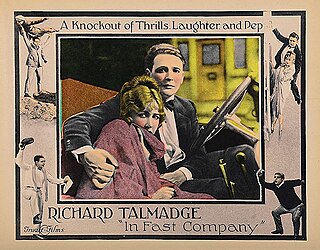
In Fast Company is a 1924 American silent action film directed by James W. Horne and starring Richard Talmadge, Mildred Harris and Sheldon Lewis.
Tessie is a 1925 American silent comedy drama film directed by Dallas M. Fitzgerald and starring May McAvoy, Robert Agnew, and Lee Moran.
A Shocking Night is a 1921 American silent comedy film directed by and starring Eddie Lyons and Lee Moran. The cast also included Alta Allen and Lionel Belmore.

The Price of Success is a 1925 American silent drama film directed by Tony Gaudio and starring Alice Lake, Lee Shumway, and Gaston Glass.

The Gun Runner is a 1928 American silent adventure film directed by Edgar Lewis and starring Ricardo Cortez, Nora Lane and Gino Corrado. The film was based on the 1909 novel of the same title by Arthur Stringer. It was made and released by Tiffany Pictures during John M. Stahl's period as head of production for the studio.

















